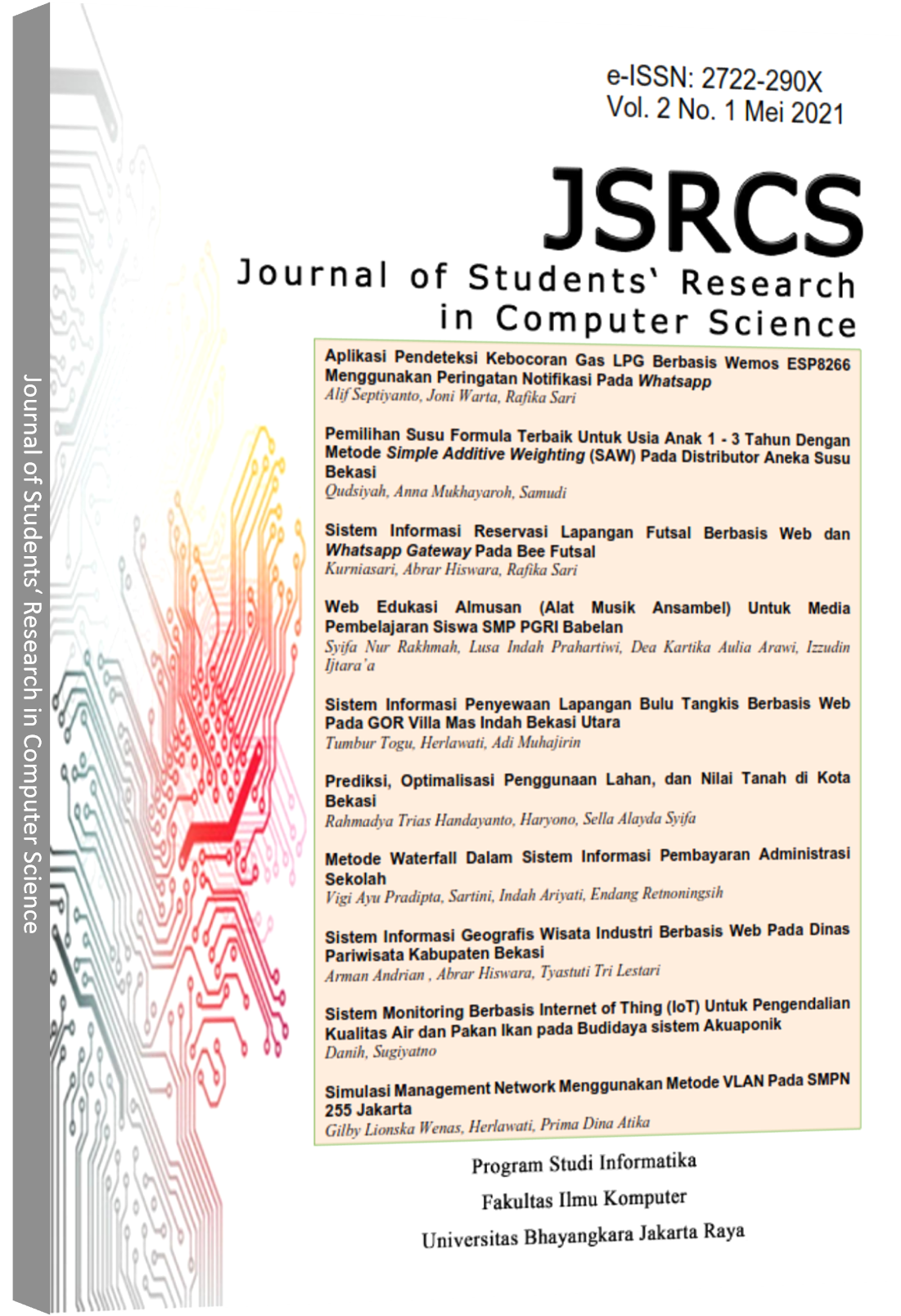Pengelompokan Dampak Gempa Bumi dan Kerusakan Pada Wilayah Berpotensi Gempa di Provinsi Sumatera Barat
DOI:
https://doi.org/10.31599/81fwpe68Keywords:
Clustering, Data Mining, Earthquakes, K-Means, Linear RegressionAbstract
Earthquake disaster data represent knowledge from the West Sumatra Province, data taken from the official website of the National Disaster Management Agency that occurred in the period 2001 to 2018. Clustering data mining techniques are used to determine the earthquake impact area using Knowledge Discovery Data. Mining Method (KDD) consisting of Domain Understanding, Additional Selection (Data Selection), Preprocessing (Data Cleaning, Data Sampling), Transformation (Data Normalization), Data Mining (K-means & Linear Regression), Evaluation and Interpretation (cluster & Prediction). The results showed that the use of the K-Means method resulted in 3 clusters with the largest earthquake impact in the city of Padang in 2009, while the use of Linear Regression estimates the impact of victims and damage to facilities and units that often occur in earthquake locations. The purpose of the research is to implement and categorize and predict to find out the results of the impact and damage of the earthquake that occurred in the province of West Sumatra.












_-_Copy1.jpg)

